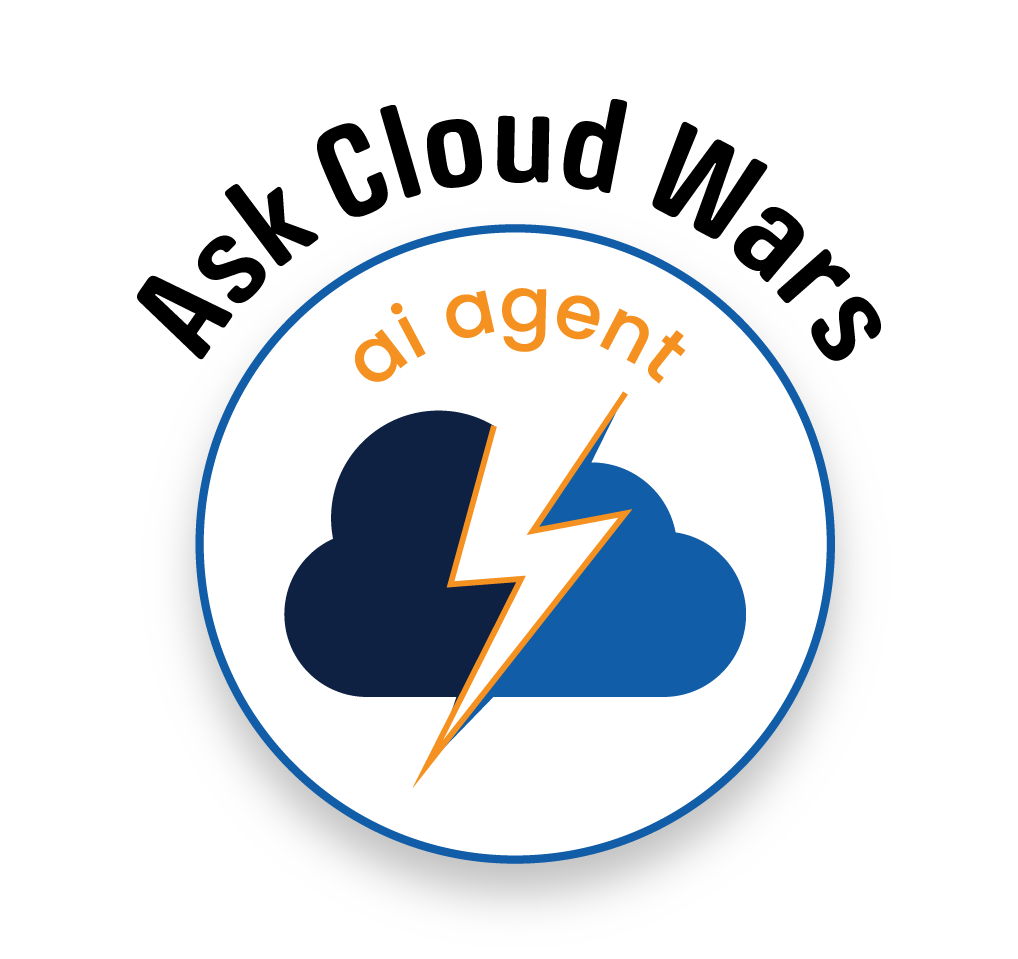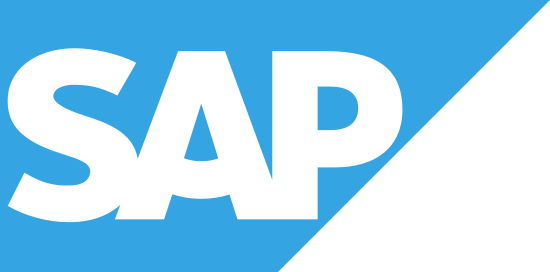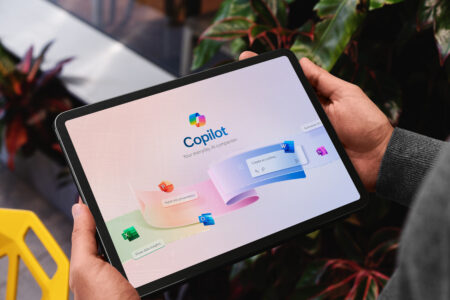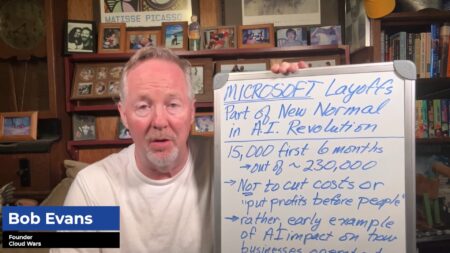
As business customers factor future AI capabilities into their decisions over which apps vendor to choose, the four big apps providers in the Cloud Wars Top 10 are pushing full suites more aggressively than ever before as the indispensable ingredient for generating high-value data that’s AI’s lifeblood.
While those top-priority strategic AI initiatives are top of mind for the entire C-suite these days, the trend toward suites plays into a few other key concerns for business executives driving transformation efforts:
- Integration Fatigue: they’re sick and tired of long, expensive, and often-fragile integration projects;
- Employee Experience: rather than employees being baffled by multiple applications and interfaces, business leaders want to boost employee experiences by providing them with modern, world-class UIs that are not only not baffling but can be fully intuitive and even — dare I say it — fun;
- Boosting Security: fewer connecting points, fewer workarounds, fewer passwords, etc.; and
- The Need for Speed: common data models help everything move more rapidly and helps businesses move as fast as the world around them.
So while it’s far too soon to try to handicap the rapidly escalating Suite Wars across (alphabetically) Oracle, Salesforce, SAP, and Workday, I’ve pulled together some thoughts from high-level execs of each company to help you understand how and why they have all become avid advocates for suites.
Ask Cloud Wars AI Agent about this analysis
Oracle Executive Vice-President Steve Miranda
“We’re not surprised to see the movement toward applications suites —which has always been our approach — as organizations look to get ahead of the competition, adapt to ever-changing market conditions and regulations, and automate end-to-end business processes with AI,” Miranda said in an email message. “The data requirements of AI are well-suited to a suite of applications on a common data model, as opposed to a patchwork of disparate apps that require numerous integrations.
“To help organizations adapt and automate processes, Oracle Fusion Applications Suite delivers end-to-end AI within existing workflows, at no additional cost. We help customers across industries apply the right AI technologies, including generative and agentic AI, to the right business scenarios,” Miranda said in setting up the suites-are-perfect-for AI argument.
“Our comprehensive suite of cloud-based solutions connects finance, HR, supply chain, manufacturing, sales, service, and marketing, and is often home to the customer’s most up-to-date and trusted data. This allows AI embedded in our applications to deliver relevant and context-driven insights, recommendations, actions, and assisted authoring.”
And those AI requirements, Miranda said, go beyond applications.
“We are the only vendor that provides a complete suite of enterprise applications, trusted data and security, and a highly performant cloud infrastructure specifically engineered for AI. This unique combination is essential to achieving positive AI outcomes, as the best AI requires the best data, the best applications, the best technology, and industry-leading security. It has also enabled us to deliver hundreds of AI features, including over 100 generative AI use cases and more than 50 agentic workflows throughout Fusion Applications. To support unique requirements, we empower customers to augment existing use cases, create new ones, and add new AI agents. With end-to-end AI capabilities, the flexibility to add more, and new AI features delivered every 90 days, Fusion Applications customers are uniquely positioned to take immediate advantage of AI.”
Salesforce CEO Marc Benioff
Earlier this month on Salesforce’s fiscal-Q3 earnings call, Benioff talked about how the company’s recently completed integration effort to get all of its application clouds on the same platform will drive huge customer benefits around data and AI, particularly with the emergence of its extremely ambitious Agentforce agenda.
“It’s also grounded in each customer’s data, their purchases, returns, and more — it’s that 200 petabytes or 200 to 300 petabytes of Salesforce data that we have that gives us this kind of, I would say, almost unfair advantage with Agentforce because our agents are going to be more accurate and the least hallucinogenic of any because they have access to this incredible capability,” Benioff said.
“Over the last few years, we’ve really aggressively invested in integrating all of our apps on a single core platform with shared services for security, workflow, user interfaces, and more. We’ve been rewriting all of our acquisitions into that common area, and we’re really looking at how do we take all of our applications and all of our acquisitions — everything — and deliver it into one consistent platform,” Benioff said.
“We call that ‘More Core’ internally, and when you look at that More Core initiative, I don’t think there’s anyone who delivers this comprehensive platform — Sales, Service, Marketing, Commerce, Analytics, Slack, all of it — as one piece of code. And then, now deeply integrated into that one piece of code is also our Data Cloud.”
Armed with all of those capabilities built on a single fully uniform platform, Benioff said, Salesforce is powerfully positioned to deliver on his expectations for an Agentic Revolution.
“That’s a key part of our strategy, which continues to have this phenomenal momentum as well to help customers unify and federate with Zero Copy data access across all their data and metadata, which is crucial for AI to work. And now that third layer is really opening up for us, which is this agentic layer. We’ve built this agentic layer that takes advantage of all the investments in Salesforce for our customers and made it into one platform.”
One platform, one piece of code — Benioff returned to those key themes as he emphasized the need to make AI agents easy for business to understand, deploy, build, and optimize.
“These three layers form a complete AI system for enterprises and really uniquely differentiate Salesforce — and uniquely differentiate Agentforce — from every other AI platform in that this is one piece of code,” Benioff said. “This isn’t like three systems, and it’s not a bunch of different apps all running independently. This is all one piece of code, and that’s why it works so well —because it is one platform.”
SAP
I believe SAP has two distinct advantages over its competitors:
- SAP has about 300 million users of its cloud applications, solutions, and services, a number that I believe is larger — and perhaps much larger — than what any other of these four major apps providers can claim; and
- SAP’s Cloud ERP Suite is growing much, much faster than any of the other vendors’ suites.
Six months ago, I highlighted the point about SAP’s breakaway growth rate for its Cloud ERP Suite in an analysis headlined “SAP #1 Fastest-Growing Apps Vendor; Microsoft #2, Workday #3, Salesforce #4, Oracle #5.”
And one month later I analyzed SAP’s Q2 financials results in a piece headlined “SAP Crushes Q2 as Booming Cloud ERP Suite Pushes Backlog Up 28%.” In the excerpt below from that analysis, you’ll see how SAP CEO Christian Klein inextricably ties the company’s success with its Cloud ERP Suite to the new business value it plans to deliver to customers with its Business AI portfolio.
Powered by the accelerating growth of its Cloud ERP Suite, SAP delivered excellent Q2 numbers across the board and sharply differentiated itself from other major enterprise-apps vendors that have cited slowdowns in customer demand.
With Q2 revenue for its Cloud ERP Suite up 33% to $3.72 billion, that core component of SAP’s business is now on a $15-billion annualized run rate. And that 33% figure becomes even more impressive when viewed next to SAP’s 31% jump in Q1 Cloud ERP Suite revenue, which means SAP is achieving a truly breakaway level of performance: even as the Cloud ERP Suite business is getting bigger, its growth rate is going up.
Another major factor behind the stellar Q2 results was SAP’s Business AI offerings. On the Q2 earnings call, CEO Christian Klein said that about 20% of the deals booked in Q2 included “premium AI use cases.”
On top of those achievements, SAP also demonstrated strong ongoing customer demand for its applications and platforms as its current cloud backlog jumped 28% to $16.1 billion. And again, SAP’s Q2 performance stands in stark contrast to the blunt commentary from competitors about softening customer demand.
“My main message to you in this call is that we continue to deliver,” Klein said on the Q2 earnings call.
“Despite the volatile environment in the software industry, our growth momentum remained strong in Q2. More and more customers are moving to the cloud and our portfolio is becoming increasingly attractive thanks to SAP’s Business AI capabilities.”
..
SAP’s breakthrough performance has been powered by a few key elements:
- Cloud ERP Suite: the modular and fully integrated set of applications is ideal for optimizing end-to-end processes, and also enables an unmatched source of data for SAP’s AI services;
- Business AI services built into those enterprise apps and the Joule copilot;
- RISE and GROW programs that guide customers into the cloud and offer “personalized” approaches to match a business’s particular needs;
- Business Technology Platform that has harmonized all of SAP’s apps as well as solutions created by the large and growing SAP ecosystem; and
- Datasphere, SAP’s business data fabric architecture.
Throughout the Q2 earnings call, Klein was bullish on the company’s momentum, with particular emphasis on the impact Business AI is already having as well as its enormous potential for the future.
Speaking about the company’s recent Sapphire event, Klein said, “Business AI has moved directly to the center and there’s no doubt that everyone now perceives SAP as a major AI player, given how well we’re positioned to embed AI into the operations of our customers.
“This perception manifested itself in our Q2 numbers because in every ERP and LOB deal we closed, our AI strategy played a key role. Also, AI had a direct impact on our bookings in the second quarter with almost 20% of all deals including our premium AI use cases,” Klein said.
Workday CEO Carl Eschenbach
On Workday’s fiscal-Q3 earnings call last month, Eschanbach emphasized on a few occasions the trend among customers to go “full suite,” which for Workday means both HCM and Financials.
“They want to reduce total cost of ownership, simplify their operations, and harness the power of AI across our best-in-class HR and finance solutions and provide employees with an amazing user experience,” Eschenbach said on the call, noting that “more than 35% of our new core customers in Q3 were full suite.
“That was evident in the growth we had in full suite,” he added, noting that (a) “more than 35% of our new core customers in Q3 were full suite” and (b) 90% of Workday wins in government and higher ed were full suite.
Healthcare is another vertical where customers went for both sets of core applications.
“In healthcare, we had a huge full-suite win with CommonSpirit Health, one of the largest nonprofit healthcare systems in the U.S., as well as Community Health System and Valley Children’s Healthcare,” Eschenbach said on the call.
Eschenbach said Workday now has “more than 70 million users under contract generating more than 800 billion transactions a year on our platform,” which he said gives Workday “the world’s largest and cleanest HR and finance dataset.” That’s a bold claim, and one that at least for now will go unchallenged as neither SAP nor Oracle releases comparable figures.
All that data, Eschenbach said, is now fueling key AI initiatives for Workday customers.
“In our industry, where decisions are high-stakes and complex, the quality and quantity of our data is a critical differentiator,” he said. “And the combination of this data, with our ability to understand the context behind it, enables Workday to unlock value in a way no competitor can do.”
Final Thought
All in all, this push toward suites and the data richness they generate sounds like another sterling example of how the biggest winners in the Cloud Wars are always — always! — the customers.
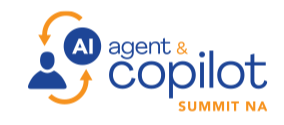
AI Agent & Copilot Summit is an AI-first event to define opportunities, impact, and outcomes with Microsoft Copilot and agents. Building on its 2025 success, the 2026 event takes place March 17-19 in San Diego. Get more details.
.



